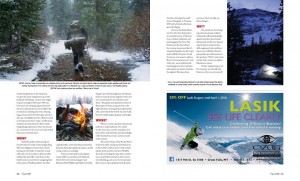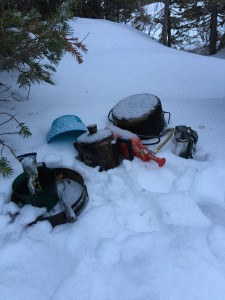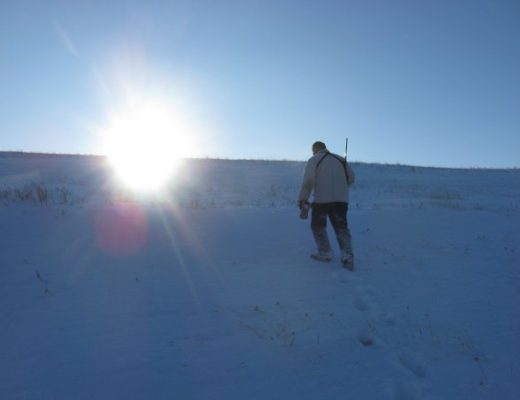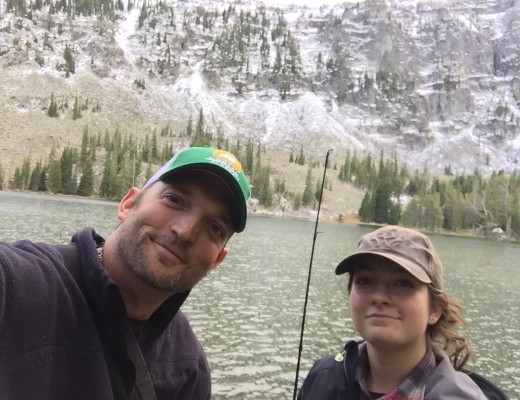 The idea of a winter backpacking adventure had borne so much promise, excitement, and intrigue while hatching the plans back home, next to a piping hot, cast iron wood stove with a steaming cup of Seattle’s finest at hand.
The idea of a winter backpacking adventure had borne so much promise, excitement, and intrigue while hatching the plans back home, next to a piping hot, cast iron wood stove with a steaming cup of Seattle’s finest at hand.
Two weeks later, hunkered in a flimsy tent, tied off with 550 cord to multiple trees, bracing against 50mph wind gusts carrying chill factors far below zero, the challenge was no longer theoretical, but palpable. In retrospect, I did almost everything wrong on that trip. I brought a tent that wasn’t up to the task, carried too much food and clothing, and learned the hard way how ineffective melting snow as a water source can be. However, I walked away from that first adventure with a desire to get it right and the sense of satisfaction that comes from passing Mother Nature’s impromptu, high consequence tests.
Several years and many trips later, I’m still no expert, but I’ve been deeply bitten by the cold weather camping bug, have the memories and scars to prove it, learn something new about myself and the process every trip and embrace the solitude and breathtaking scenery that comes with exploring the backcountry in Montana’s most unforgiving season. Sound like fun? Read on…
How?
Cold Weather Camping can involve a lot of the same gear you already have for summer trips, with a margin of error built in for safety in unpredictable weather. The cheapest way to pull off exploratory winter trips is to simply carry enough “extra stuff” to push back against the elements if things go awry. However, this method also carries with it the highest, harshest learning curve with the most potential for significant consequences.
As such, before putting yourself at the mercy of untested gear and minimal experience in the backcountry, give the same equipment a go in the backyard. Thinking a 3 season tent might be good enough in February? Not sure how warm of a sleeping bag you’ll need? Set your camp up just as you would in the mountains, including your tent, sleeping bag, pad and all your kitchen gear and do a dry run, overnighter in town. There is much to be learned on these “trips” and the price of tuition is much lower for these winter backpacking experiences when the lessons are carried out in the snow and cold, 50 feet from your own back door.
When?
 Early December ranks among my favorite times for early winter backpacking Montana. Big game seasons have closed leaving very few folks to share the woods with and a lot of country is still accessible without the aid of the snowshoes or skis that become necessities for navigating later in the season. Weather patterns are often unpredictable, as the tumultuous transition from late Fall to the depths of Winter is in full swing, so plan accordingly.
Early December ranks among my favorite times for early winter backpacking Montana. Big game seasons have closed leaving very few folks to share the woods with and a lot of country is still accessible without the aid of the snowshoes or skis that become necessities for navigating later in the season. Weather patterns are often unpredictable, as the tumultuous transition from late Fall to the depths of Winter is in full swing, so plan accordingly.
If you are interested in learning late season skills on snowshoes, the National Forest Service (www.fs.usda.gov) and Montana Fish Wildlife and Parks (www.fwp.mt.gov) are solid clearinghouses of information for seasonal classes, beginner treks, and even occasional, free use of loaner snowshoes. The guides and experienced users at these types of clinics can point you in the right direction, ensuring that you get started with a shoe that is the best fit for your build, level of conditioning, trip goals, and budget. Bighorn Outdoor Specialists (www.bighornoutdoorspecialists.com) offer a good selection of snowshoes and backcountry skis for users of all ability levels and provide subject matter expertise that lasts long after your initial purchase.
Where?
Where, is truly a question of personal preference and familiarity. For initial winter excursions, I prefer someplace I’ve been before and therefore, have knowledge of the trail system, terrain and year round water sources.
 The eastern slope of the Rocky Mountain Front ranks among my favorite places in the world to explore year round, including the harsh months of winter. Wildlife abounds (including the type that consider you a potential food source), the scenery is breathtaking, and access to terrain types from easy on up to graduate level abound. Get there through the small towns of Augusta or Choteau, MT, both of which offer food, gas and lodging.
The eastern slope of the Rocky Mountain Front ranks among my favorite places in the world to explore year round, including the harsh months of winter. Wildlife abounds (including the type that consider you a potential food source), the scenery is breathtaking, and access to terrain types from easy on up to graduate level abound. Get there through the small towns of Augusta or Choteau, MT, both of which offer food, gas and lodging.
 Discover the Rocky Mountain Front by Tom Kotynski is an essential source of information on hikes, trailheads, and peak bagging The Front. My family used the first edition for so many excursions that it’s being held together by duct tape and is still the first place I look for tips on new areas to explore. Buy it at www.amazon.com and check out www.outtherewithtom.blogspot.com for real time information on winter activities throughout Montana, from someone who’s actually out there doing it.
Discover the Rocky Mountain Front by Tom Kotynski is an essential source of information on hikes, trailheads, and peak bagging The Front. My family used the first edition for so many excursions that it’s being held together by duct tape and is still the first place I look for tips on new areas to explore. Buy it at www.amazon.com and check out www.outtherewithtom.blogspot.com for real time information on winter activities throughout Montana, from someone who’s actually out there doing it.
Why?
 No crowds, an ever changing winter landscape, brilliant white peaks silhouetted sharply against cloudless skies, breathtaking cold, and the ever present opportunity to measure your skill, equipment and conditioning on one of Mother Nature’s pop quizzes are solid answers to the question, “Why?”, and round out my Top 5 reasons to explore Montana in winter.
No crowds, an ever changing winter landscape, brilliant white peaks silhouetted sharply against cloudless skies, breathtaking cold, and the ever present opportunity to measure your skill, equipment and conditioning on one of Mother Nature’s pop quizzes are solid answers to the question, “Why?”, and round out my Top 5 reasons to explore Montana in winter.
Winter backpacking is not for everyone, nor should it be. However, if you count yourself among the cold weather crazies that don’t put the camping gear in storage when the snow flies, I’ll look forward to seeing you on the mountain.
Disclaimer
Along with the satisfaction and sense of accomplishment that winter backpacking provides, comes a modicum of risk presented by harsh and rapidly changing weather, unstable terrain, wild animals, and crises created by faulty equipment or human error, to name a few. The risk of injury or death is real, just as it is when crossing 10th Ave South in Great Falls at rush hour. However, in both cases, the risk is minimized by paying attention and responding appropriately to cues provided by the environment. That being said, learn everything you can from experts (of which I am not one!), get plenty of experience backpacking in the summer first, be intimately familiar with your equipment and do a few “backyard trips” before biting off a piece of the Montana backcountry in winter. It bites back!





No Comments